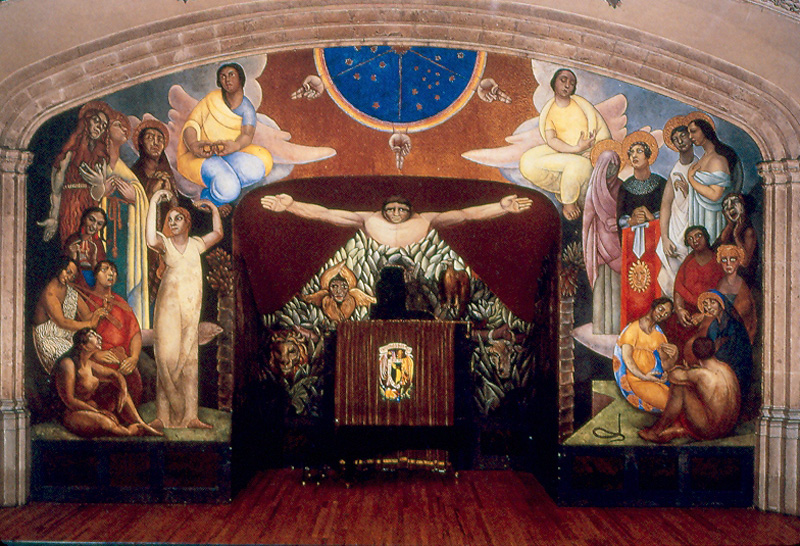
Diego Rivera (6) |
 |
|---|
Source: WTL research files. Painting: "Creation" (1922-1923). Mural in the Anfiteatro Bolívar at the Escuela Nacional Preparatoria, Mexico City. Comments: In 1909 in Paris, Rivera met the Russian artist Angeline Beloff; she became his common-law wife. In 1916, she gave birth to their son Diego (1916-1917). In 1917, his disagreements with various artists lead to a break with them, including Bracque, Gris, Fernand Léger, and Lipchitz. Influenced by the Russian Revolution of 1917, Rivera begins to think about using art for public service and instruction. This mural is an example of that desire. Yet, in 1918 and 1919, Rivera and Beloff continue to live in the arts community in Paris. In 1919, Rivera meets the Mexican artist, Diego Alfaro Siqueiros. At the end of this year, Rivera fathers a child with another Russian artist, Marevna Vorobëv-Stebelska. In 1920, he studies art in Italy while Obregón is elected President at the end of the Mexican Revolution. In this same year the Mexican philosopher José Vasconcelos is named minister of education. In 1921, Rivera returns to Mexico, where he begins painting Mexican subjects in a "classical" style. In 1922, he marries Guadalupe Marín (for Rivera's painting of this wife of his, see: => Diego Rivera #32); they settle in Mexico City. In 1922 and 1923, creates this mural in the Bolívar Amphitheater in the National Prep School in Mexico City. Among the figures see in this mural are: primal energy, emergent man, woman, the three theological virtues, four figures of the arts, science, nine humanistic allegorical figures, and man. Question: What is the effect of this mural surrounding the lecture podium in the auditorium in this high school? |
|---|
 |